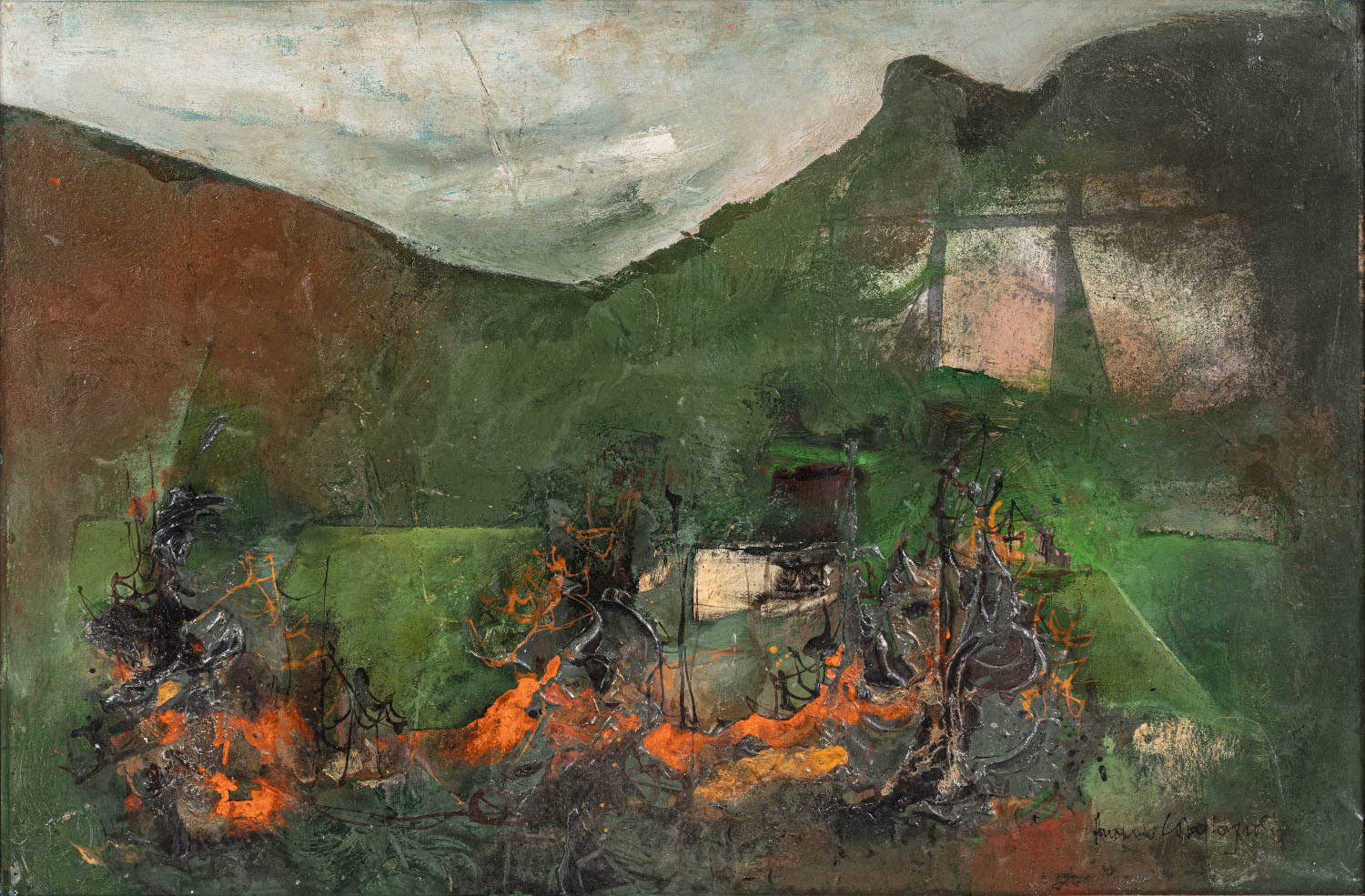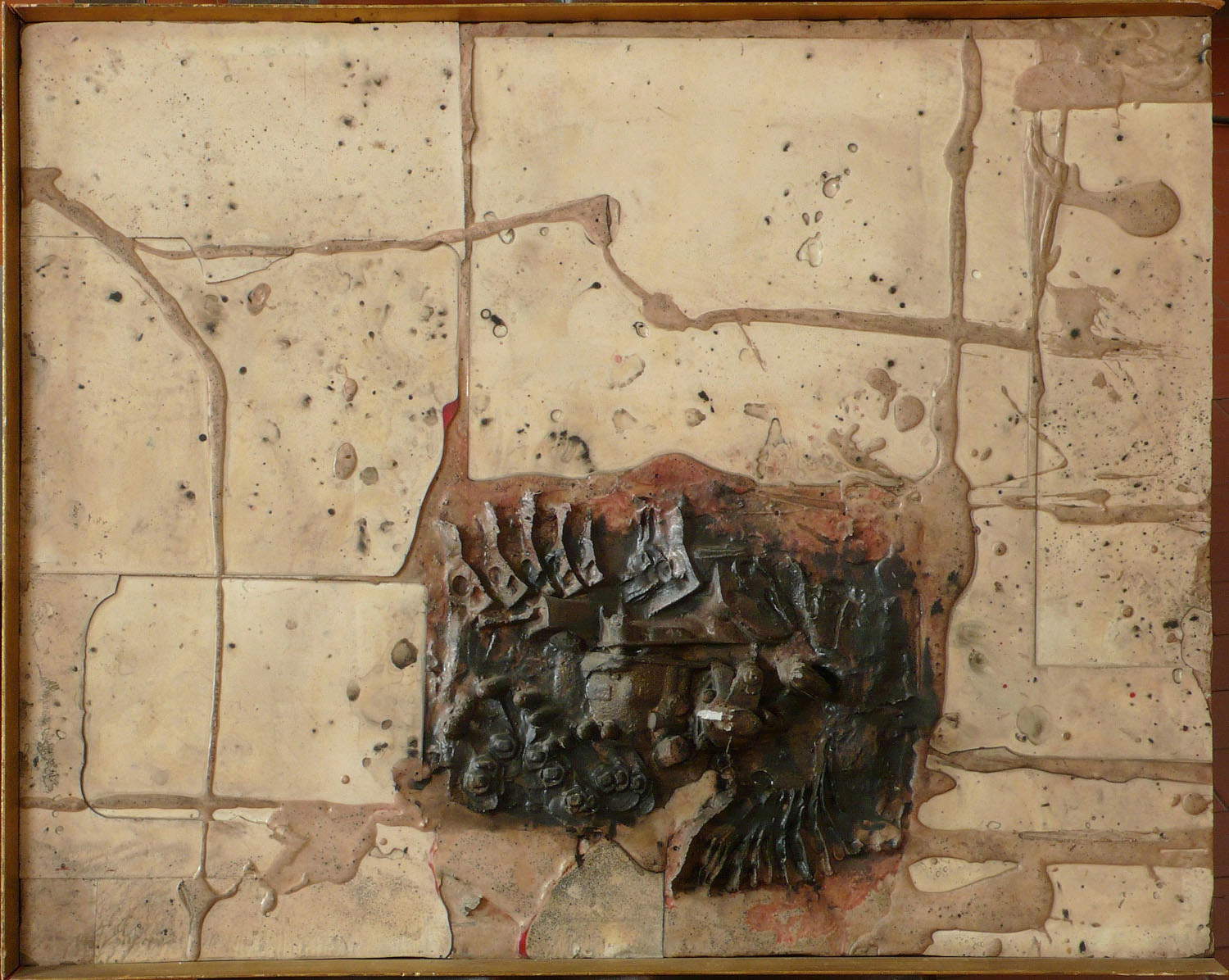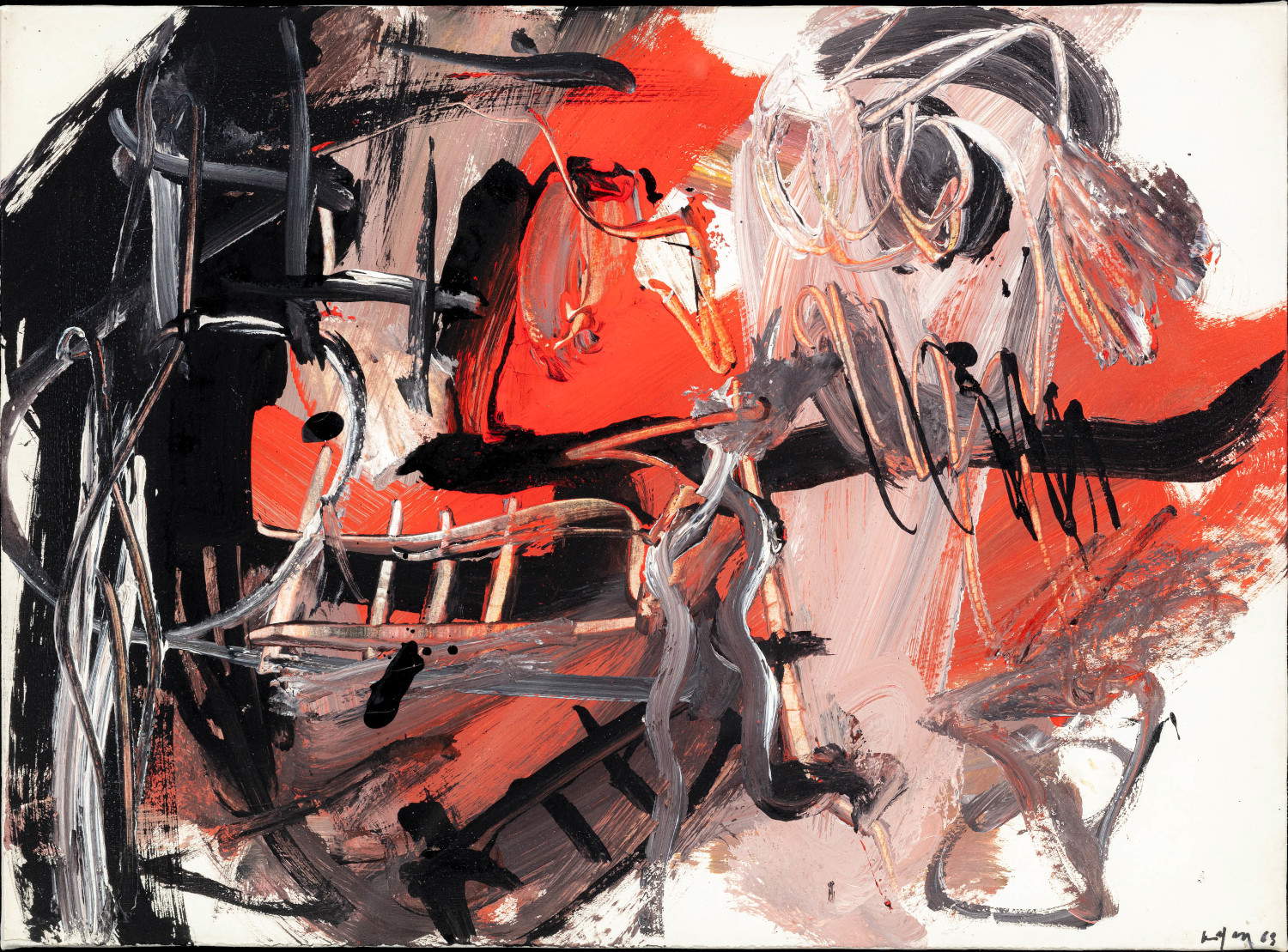From March 27 to September 1, 2024, at the Accorsi Ometto Museum of Decorative Arts in Turin, it is possible to visit the exhibition, curated by Francesco Poli, entitled Turin in the 1950s. The Great Season of Informal Art. The exhibition aims to bring attention back to a fundamental phase in the renewal of Turin’s art scene between the years after World War II and the early 1960s: the Informal. After the war, during a period of cultural and ideological renewal, Italy embraced new international artistic trends, from Post Cubism to Abstractionism to the Informal of the 1950s. Milan, Rome, Venice, and Turin became hubs of contemporary art, thanks to the vibrancy of artistic research and exhibitions at the time. Turin in particular distinguished itself with the opening of the Galleria Civica d’Arte Moderna in 1959 and continued to grow with the opening of major galleries, the Rivoli Castle, events such as Artissima, and the establishment of the Sandretto Re Rebaudengo and Merz foundations in the following decades.
On display are the creations of the main artists who have worked in the Turin and Piedmont area, in dialogue with a wide selection of works by the most celebrated Italian and international artists present in private gallery exhibitions and events hosted in public spaces. Some 30 painters and sculptors from the Turin area: Nino Aimone, Franco Assetto, Annibale Biglione, Mario Calandri, Romano Campagnoli, Francesco Casorati, Antonio Carena, Sandro Cherchi, Mauro Chessa, Mario Davico, Pinot Gallizio, Albino Galvano, Franco Garelli, Mario Giansone, Ezio Gribaudo, Gino Gorza, Mario Lattes, Paola Levi Montalcini, Piero Martina, Umberto Mastroianni, Mario Merz, Mattia Moreni, Adriano Parisot, Enrico Paulucci, Carol Rama, Piero Rambaudi, Piero Ruggeri, Sergio Saroni, Filippo Scroppo, Piero Simondo, Giacomo Soffiantino, Luigi Spazzapan, Mario Surbone, Francesco Tabusso.
In contrast, the selection of Italian and foreign artists includes Afro, Pierre Alechinsky, Karel Appel, Enrico Baj, Alberto Burri, Giuseppe Capogrossi, Gillo Dorfles, Jean Fautrier, Lucio Fontana, Sam Francis, Gruppo Gutai, Hans Hartung, Toshimitsu Imaï, Asger Jorn, Georges Mathieu, Ennio Morlotti, Shigeru Onishi, Jean Paul Riopelle, Emilio Scanavino, Pierre Soulages, Antoni Tapiés, Giulio Turcato, Emilio Vedova. In the field of architecture, some of the most significant achievements of those years, such as the projects of Carlo Mollino and Isola and Gabetti, the GAM, and the constructions of Italia ’61, will be documented through films of the time.
Turin’s cultural renewal and international openness in the 1940s and 1950s were marked by relevant exhibition events: French Art of Today in 1947; Italian Art of Today. Turin Prize of 1947, organized by Mastroianni, Moreni, and Spazzapan at Palazzo Madama; the Art Club exhibition at the Unione Culturale in 1949 with 280 Italian and foreign authors, including those from Turin’s MAC; the series of seven Italy-France exhibitions curated by Carluccio and other critics at the Promotrice delle Belle Arti from 1951 to 1961; Arte Nuova. International Painting and Sculpture Exhibition of 1959, curated by Michel Tapié, Luciano Pistoi and Angelo Dragone, at the Circolo degli Artisti, marking the climax of the Informal season; Incontro a Torino. Painters of America, Europe and Japan, curated by Tapié in 1962 at the Promotrice. Precisely in the 1959 exhibition at the Circolo degli Artisti, along with the most famous protagonists of Action Painting and Informal Art, including Pollock, De Kooning, Kline, Tapiés, Fautrier, Wols, the Gutai group, Fontana, Burri, Vedova, there are also Turin exponents such as Spazzapan, Rambaudi, Cherchi, Assetto, Garelli and Carena. Then the avant-garde adventure of the Alba Experimental Laboratory for an Imaginist Bauhaus (1955-57) and the Situationist International (1957-60), founded by Pinot Gallizio, Piero Simondo and Asger Jorn, is extraordinary. Also held in Alba in 1956 was the 1st Congress of Free Artists, in which the French philosopher, writer and filmmaker Guy Debord also participated, and an exhibition was organized at the Politeama Corino with works by Jorn, Constant, Gallizio, Simondo, Rada, Kotik, Wolman, and Garelli.
Several art galleries in Turin played a key role in supporting emerging and established artists of this period. At the Bussola, led by critic Luigi Carluccio, works by masters of the historical avant-garde such as Klee, Kandinsky, and Braque are on display, as well as those of artists such as Umberto Mastroianni, Mattia Moreni, Luigi Spazzapan, and Franco Garelli. Among the young talents stand out names such as Francesco Casorati, Mauro Chessa and Francesco Tabusso, along with Piero Ruggeri, Sergio Saroni and Giacomo Soffiantino, protagonists of Turin’s Informal movement, initially linked to the Last Naturalists current theorized by Francesco Arcangeli. The Notizie Gallery, founded in 1957 by Luciano Pistoi and with the collaboration of the critic Michel Tapié, organizes significant exhibitions of both international artists, such as Burri, Fontana, Wols, Sam Francis, Tobey, Mathieu, Jorn, Dubuffet, Fautrier, Shiraga, Tapiés and Twombly, and local artists such as Antonio Carena, Piero Rambaudi, Pinot Gallizio and Mario Merz. Finally, the International Center of Aesthetic Research, directed by Ada Minola and founded in 1960 with Tapié’s guidance, focuses on informal trends from Europe, America and Japan.
For info: foundationaccorsi-ometto.it
Hours: Tuesdays, Wednesdays and Fridays 10 a.m.-6 p.m.; Thursdays 10 a.m.-8 p.m.; Saturdays, Sundays and holidays 10 a.m.-7 p.m.; Mondays closed
Full ticket € 14.00; Reduced ticket € 12.00



 |
| Turin and informal art: an exhibition-focus at the Accorsi-Ometto Museum |
Warning: the translation into English of the original Italian article was created using automatic tools. We undertake to review all articles, but we do not guarantee the total absence of inaccuracies in the translation due to the program. You can find the original by clicking on the ITA button. If you find any mistake,please contact us.